-

Cybersecurity in Connected Aircraft: Risk Mitigation for Airlines, Passengers, Airports, and Service Providers
The aviation industry is embracing a connected environment by digitizing its operations. This involves leveraging IoT devices, 5G networks, applied AI, advanced analytics, and SaaS-based applications to streamline maintenance, repair, and overhaul. A connected aircraft generates three types of information: aircraft control and navigation data, cabin-based in-flight entertainment data, and operations-based flight movement data. However, interconnected systems have greatly widened the risk perimeter. These demands call for applying security measures, including zero-trust security and secure by design principles, and collaborating with a technology partner who offers services such as threat detection, incident response, governance, risk and compliance, red teaming, 24x7 monitoring, and threat intelligence.
January, 2023
-

Utilities Digital Services 2022–2023 RadarView™
The Utilities Digital Services 2022–2023 RadarView™ can help enterprises craft a robust strategy based on industry outlook, best practices, and digital transformation. The report can also aid them in identifying the right partners and service providers to accelerate their digital transformation. The 85-page report also highlights top market trends in the utilities digital services space and Avasant’s viewpoint.
December, 2022
-

Manufacturing Digital Services 2022–2023 RadarView™
The Manufacturing Digital Services 2022–2023 RadarView™ can help enterprises craft a robust strategy based on industry outlook, best practices, and digital transformation. The report can also aid them in identifying the right partners and service providers to accelerate their digital transformation. The 92-page report also highlights top market trends in the manufacturing digital services space and Avasant’s viewpoint.
November, 2022
-
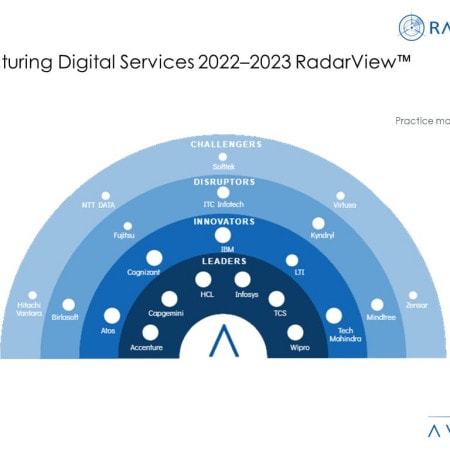
Transforming Manufacturing Operations Through Digitization
Manufacturers are under pressure to meet growing customer expectations despite increased production costs, a shortage of skilled workers, and the need to make new investments for Industry 4.0. To alleviate this pressure, they are investing in digital technologies to cut costs, shorten development cycles, reduce human dependency, mitigate risks from supply chain disruptions, and move toward sustainability. They are also working to diversify their business models and increase profitability. As this requires a strong integration of domain and technological expertise, manufacturers are collaborating with service providers for digital transformation. These emerging trends are covered in Avasant’s Manufacturing Digital Services 2022–2023 RadarView™.
November, 2022
-

Freight and Logistics Digital Services 2022–2023 RadarView™
The Freight and Logistics Digital Services 2022–2023 RadarView™ can help enterprises craft a robust strategy based on industry outlook, best practices, and digital transformation. The report can also aid companies in identifying the right partners and service providers to accelerate their digital transformation. The 70-page report also identifies key service providers and system integrators that can help businesses in their digital transformation journeys.
September, 2022
-

Life Sciences Digital Services 2022–2023 RadarView™
The Life Sciences Digital Services 2022–2023 RadarView™ can help enterprises craft a robust strategy based on industry outlook, best practices, and digital transformation. The report can also aid in identifying the right partners and service providers to accelerate digital adoption. The 93-page report also identifies key service providers and system integrators that can help enterprises in their digital transformation journeys.
September, 2022
-

IT Spending and Staffing Benchmarks 2022/2023: Chapter 8: Retail Sector Benchmarks
Chapter 8 provides benchmarks for retailers. This sector includes retailers of clothing, jewelry, hardware, furniture, sports equipment, groceries, pharmaceuticals, and general merchandise. They include department stores, fashion stores, furniture stores, pharmacies, convenience stores, sporting goods stores, and specialty retailers. We also include hospitality and consumer services in this sector. The 34 respondents in the sample range in size from $50 million to over $100 billion in annual revenue.
July, 2022
-

IT Spending and Staffing Benchmarks 2022/2023: Chapter 10: Energy and Utilities Sector Benchmarks
Chapter 10 provides benchmarks for public utilities, oil and gas producers, service companies, and midstream distributors across all organization sizes. The 19 respondents in this sector include public utilities (water, gas, and electric), integrated energy companies, upstream exploration and production companies, natural gas companies, pipeline operators, and other energy and utilities companies. The companies in our sample range in size from a minimum of about $50 million to more than $40 billion in annual revenue.
July, 2022
-
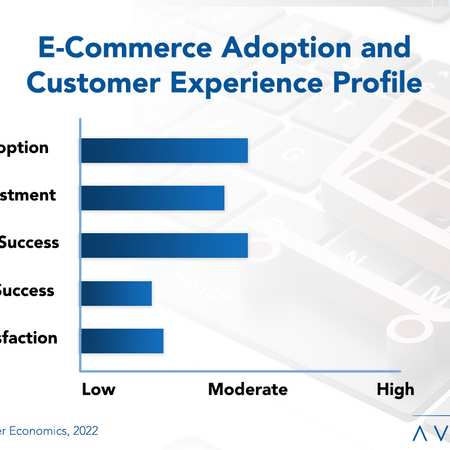
E-Commerce Complexity Causes Customer Experience Challenges
E-commerce technology, while mature, is still evolving. Customer experience is now the focal point as e-commerce systems enable hyperpersonalization. But e-commerce has become increasingly complex resulting in low TCO success and satisfactions rates. This Research Byte provides a summary of our full report on e-commerce adoption trends and customer experience.
May, 2022
-

Travel and Hospitality Digital Services 2022–2023 RadarView™
The Travel and Hospitality Digital Services 2022–2023 RadarView™ can help enterprises craft a robust strategy based on industry outlook, best practices, and digital transformation. The report can also aid companies in identifying the right partners and service providers to accelerate their digital transformation. The 93-page report also identifies key service providers and system integrators that can help businesses in their digital transformation journeys.
May, 2022
-
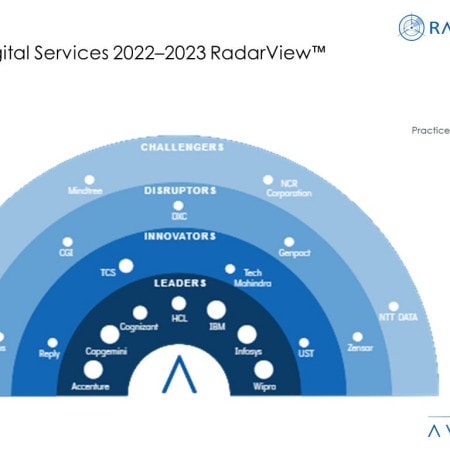
Digital Retail Services: Orchestrating an Omnichannel Experience
Retail is increasingly hyperpersonal and omnichannel. Pandemic lockdowns and supply chain disruptions have actually raised the bar for consumer expectations as they found they could have anything delivered right to their doorstep. That raised bar means that retailers are increasingly relying on data and AI to map consumer sentiment and needs, and they are deploying digital technology including virtual reality and other immersive technologies to improve the customer experience. However, all of this requires investment and seamless orchestration of multiple technologies. This is best done with partners. These emerging trends are covered in Avasant’s Retail Digital Services 2022–2023 RadarView™.
May, 2022
-
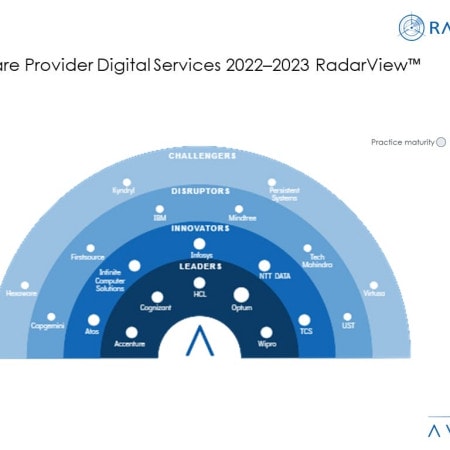
Telehealth: An Emerging Healthcare Delivery Model
Healthcare providers are increasingly investing in telehealth as it facilitates remote patient monitoring, enables wellness management, and reduces dependency on staff. They are not only offering a convenient and cost-effective care delivery model but also generating revenue by treating patients across different geographies. However, there are some challenges such as compliance, high dependency and investment in technology, and data integration. These emerging trends are covered in Avasant’s Healthcare Provider Digital Services 2022–2023 RadarView™.
March, 2022
-
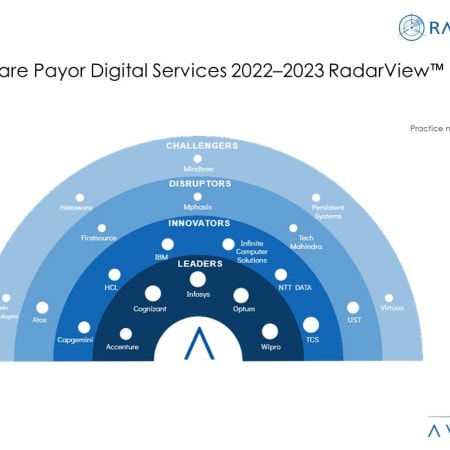
Preventive Care Investments Help Healthcare Payors Reduce Costs and Improve Quality of Care
With the rise in healthcare spending, payors are evaluating different methodologies to contain costs and improve care delivery. Major strategic goals for payors include incorporating Social Determinants of Health (SDOH) in policy calculation, shifting to a value-based care model with price transparency, and adhering to interoperability laws. However, the most critical goal is to invest in preventive care and facilitate the shift from reactive to proactive care. Payors can achieve up to 42% ROI over three years by implementing preventive care measures such as promoting lifestyle modifications, building digital health platforms, and launching apps. These emerging trends are covered in Avasant’s Healthcare Payor Digital Services 2022–2023 RadarView™.
January, 2022
-

Canada Digital Services 2021–2022 RadarView™
The Canada Digital Services 2021–2022 RadarView™ addresses Canadian enterprises’ needs and helps them identify and adopt the right technologies combined with appropriate implementation strategies. The 91-page report also identifies key service providers and system integrators that can help these enterprises in business transformation.
December, 2021
-

5G and the Future of Healthcare
5G promises to be 10—20 times faster and with less latency than the previous generation (4G), enabling new capabilities and transforming applications in a variety of industries. However, the cost of 5G is enormous. Healthcare, a notoriously laggard sector, has the opportunity to take a big step forward if it can choose the right applications to begin its investment.
October, 2021

 Grid View
Grid View List View
List View